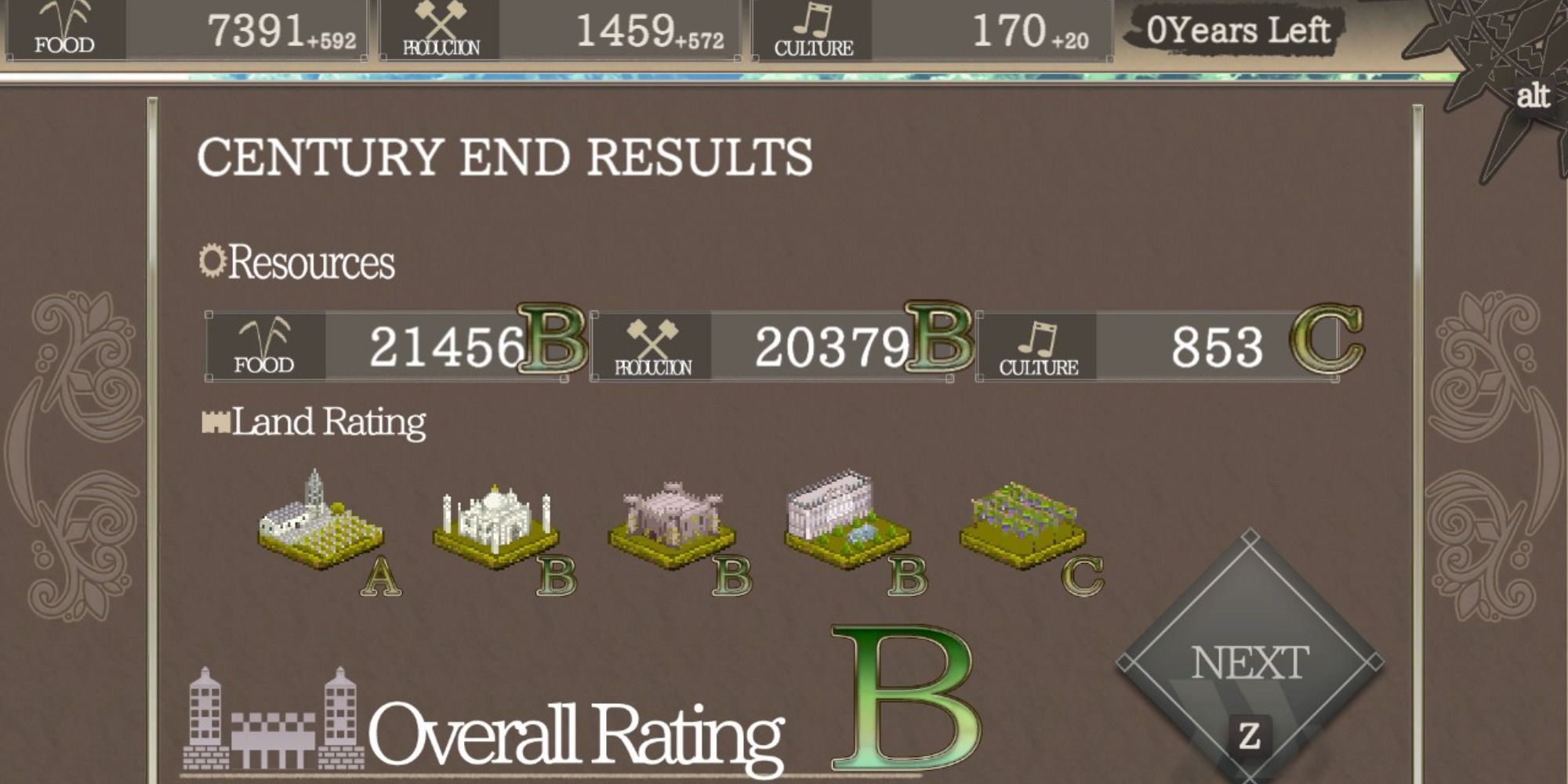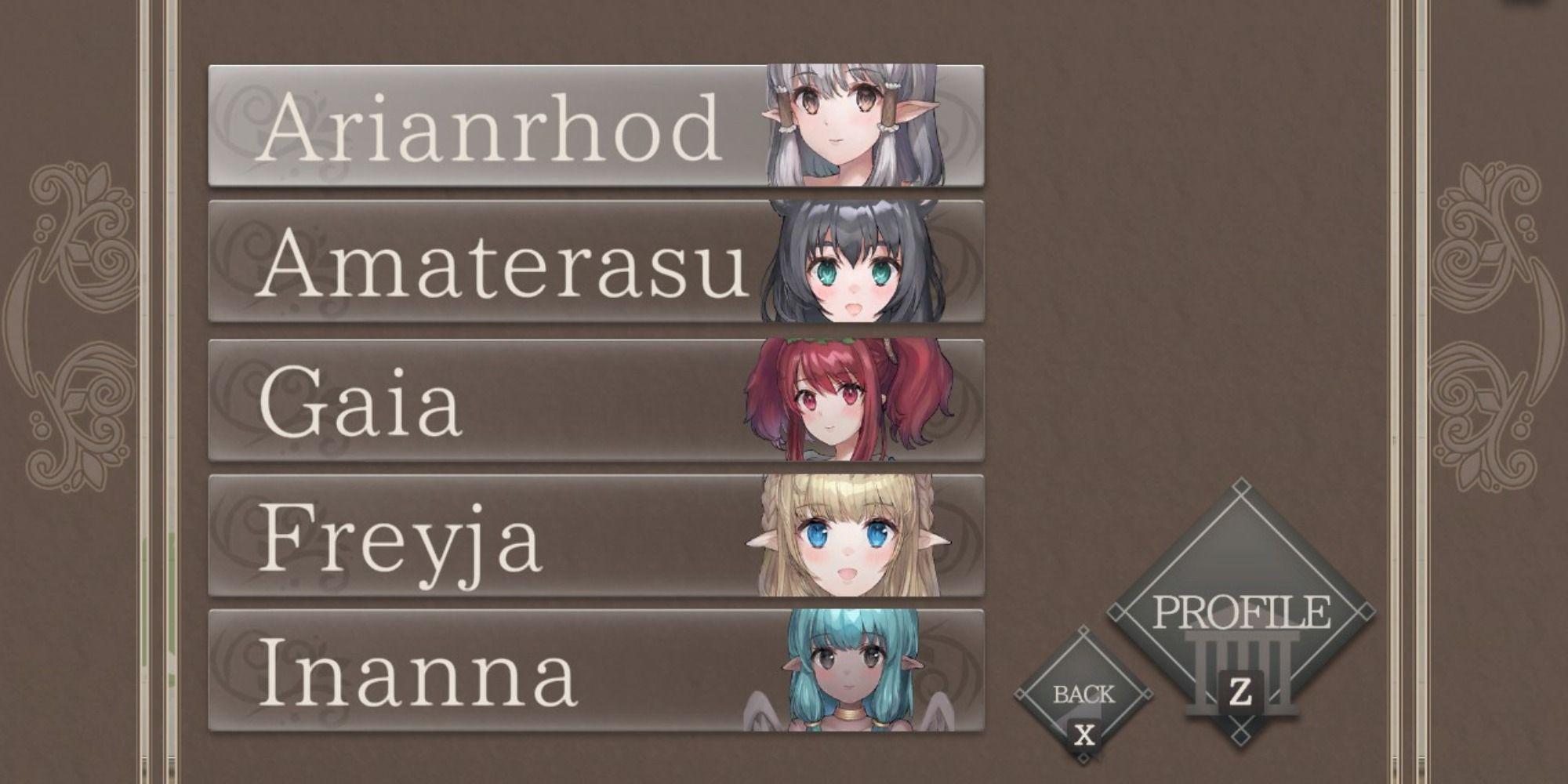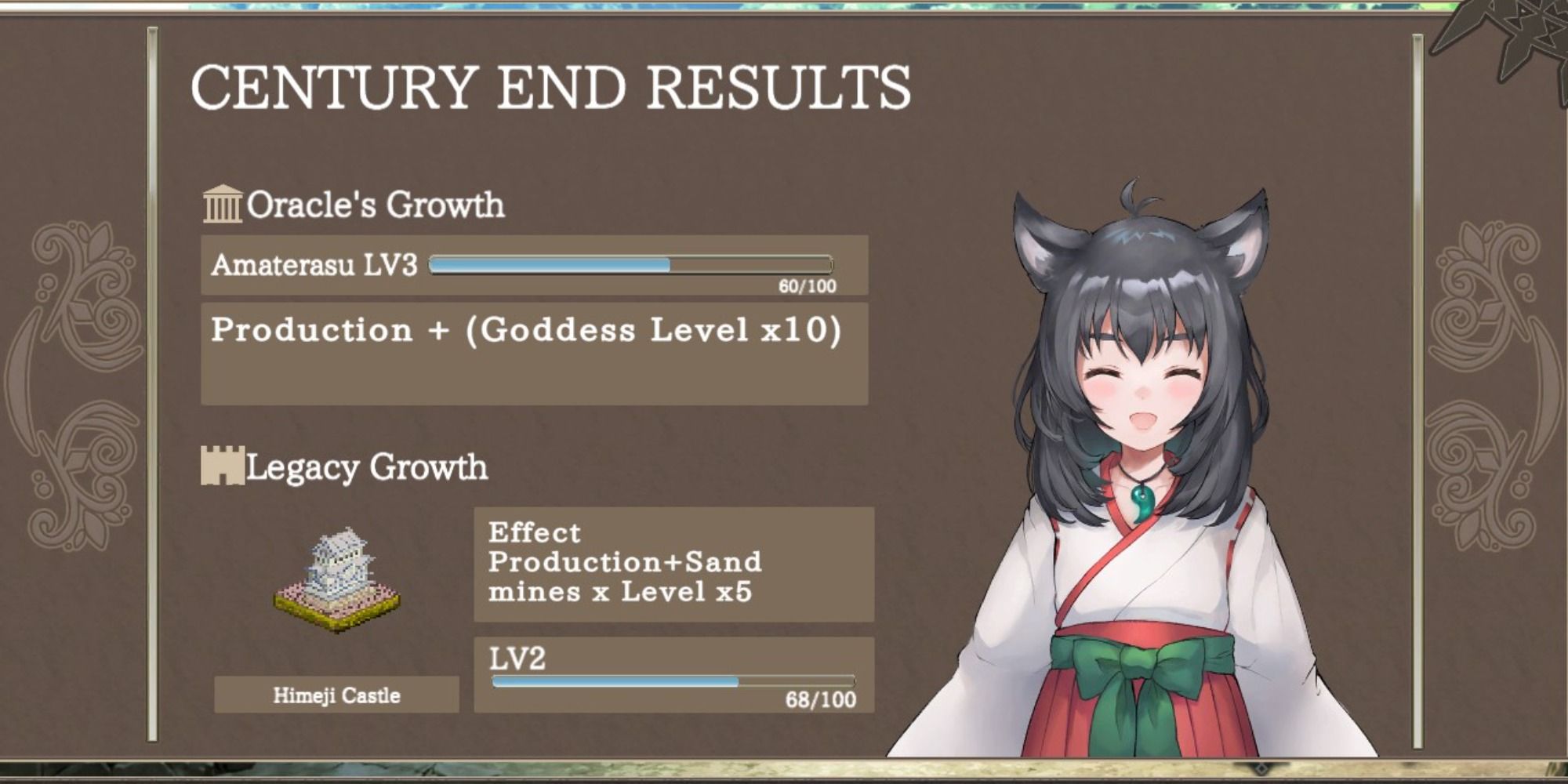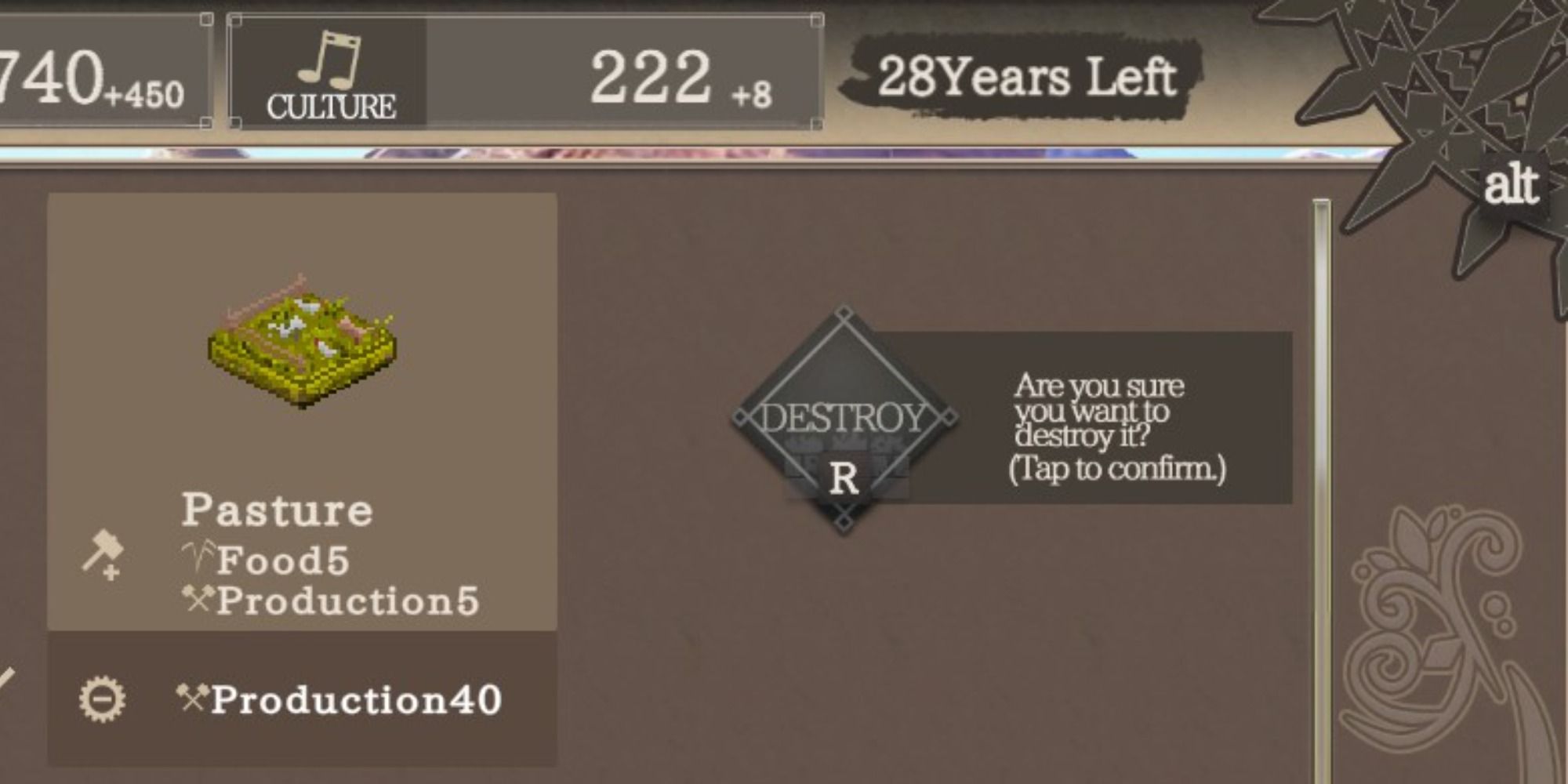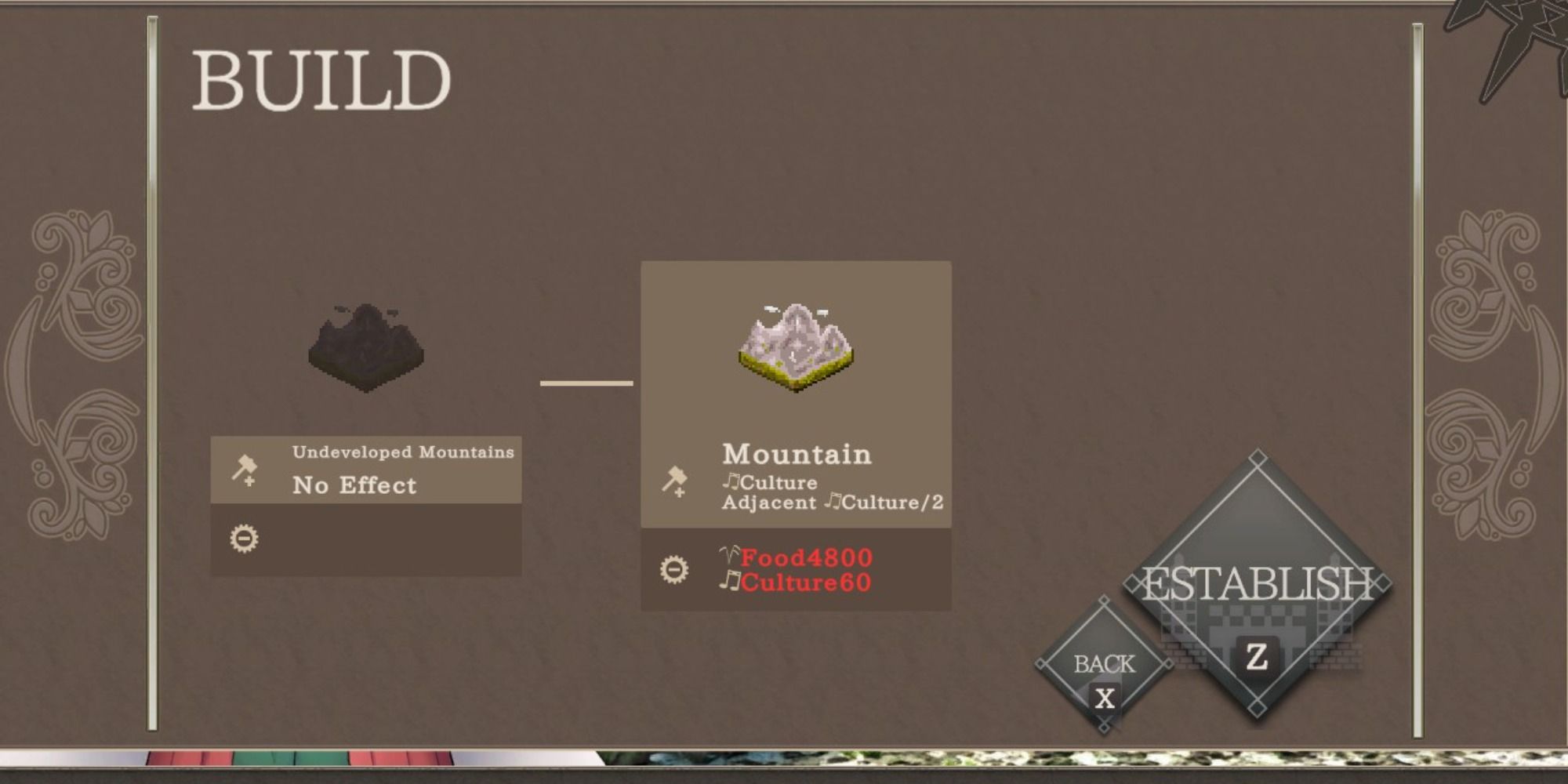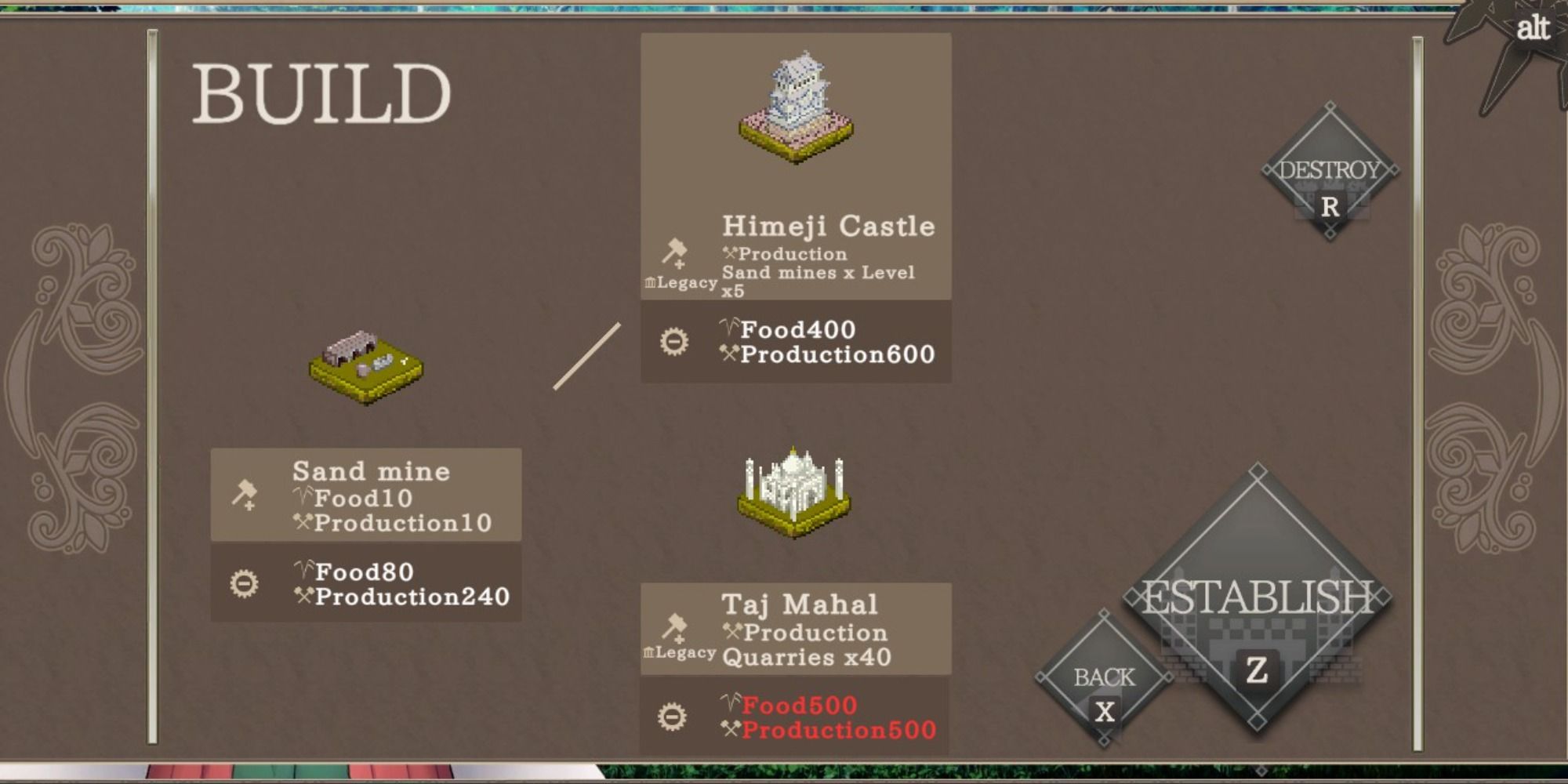Quick Links
- Understand Your Time Limit
- Choosing The Best Oracle
- Don't Be Afraid To Destroy
- Synergy Beats Offerings
- Plan For Those Valuable Tiles
The Hundred Year Kingdom is a fun simulation game where you, with the help of one of five real-life mythological goddesses, will take charge of a world and dictate what gets built. The aim of the game is to accrue as much Food, Production, and Culture as possible to ensure that your society thrives.
You will do this mostly by constructing buildings that work well with each other and forming powerful synergies – but there are other things to consider, such as your goddess's unique powers and the rare Golden Ages that can take things to the next level.
Understand Your Time Limit
The Hundred Year Kingdom's title is a pretty important one, as it reveals what you need to know about the time limitations inherent in its gameplay. Every world you play with will only last for 100 turns (or years).
This means that you can make exactly 100 actions before the game ends and you receive your total scores. This game's challenge and draw revolve around this time limit and how efficient and optimized you can make the world before the game's end.
The following actions will progress the world one year:
- Establishing a new construction.
- Upgrading a pre-existing construction.
- Destroying a pre-existing construction.
- Skipping a turn.
Choosing The Best Oracle
There are five goddesses/oracles in the game, and they will influence how your worlds develop thanks to two features they have:
- Each goddess has a unique legacy building that they enable.
- Each goddess contributes specific resources to your stockpiles.
As you play games with particular goddesses, they will level up. In addition, their unique buildings will level up – this makes them more valuable the more you play with them, enabling higher scores and more unlocks.
The table below details all five goddesses and their features.
| Oracle | Description | Resource | Unique Building |
|---|---|---|---|
| Arianrhod | Celtic daughter of the god of death. | Food and Production per turn = Goddess Level x 5 | Palace of Westminster |
| Amaterasu | Japanese goddess of the heavens. | Production per turn = Goddess Level x 10 | Himeji Castle |
| Gaia | Greek goddess of the earth. | Plains developed = Goddess Level / 2 | Colosseum |
| Freyja | Norse goddess of fertility. | Food per turn = Goddess Level x 10 | Cologne Cathedral |
| Inanna | Sumerian goddess of agriculture. | Culture per turn = Goddess Level | Ancient City of Damascus |
As you can see from the table above, most goddesses will provide a certain amount of Food, Production, or Culture per turn based on their level. Gaia is different, though. Instead, playing with her will provide you with extra Plains tiles at the beginning of a game. This only begins once she's reached level two, where you'll start games with two Plains tiles.
This second table explains what each of the goddess's unique buildings do.
| Oracle | Building | Description |
|---|---|---|
| Arianrhod | Palace of Westminster | Production per turn = Number of Factories (Building Level x 5) |
| Amaterasu | Himeji Castle | Production per turn = Number of Sand Mines x (Building Level x 5) |
| Gaia | Colosseum | Culture per turn = Number of Cities x Building Level |
| Freyja | Cologne Cathedral | Culture per turn = Number of Temples x Building Level |
| Inanna | Ancient City of Damascus | Culture per turn = Culture values of adjacent tiles |
As you can see from the table, most of these buildings will be quite weak until you level them up quite a lot. Eventually, they'll be incredibly useful constructions that you can base your entire building philosophy around.
For example, if you have built five Factories on a map and then build the Palace of Westminster, it will give you an additional 25 Production per turn if it's at level one. However, at level four, that skyrockets up to 100 Production per turn.
Don't Be Afraid To Destroy
Many maps will force you to build things that aren't conducive to whatever strategy you're currently using. For example, lots of maps will have Potential Pastures and Potential Windmills, and it's only beneficial to choose one type of building to benefit from Legacy synergies.
If you enter the building's Status menu, you can destroy the building. This returns the tile to a flexible Plains tile.
- Destroying a building takes a turn.
- You must have developed the tile previously to destroy it.
- You do not get any resource refunds when destroying a tile.
The sound effect that plays when destroying a tile is very loud, high-pitched, and scratchy – beware!
Synergy Beats Offerings
When you first start, it can be tempting to build according to the Offerings available to you. Offerings are one-time resource gifts provided for constructing certain varieties of building.
Offerings are very useful in the first few turns of a game. They will help you accrue the resources needed to develop new tiles – especially the sparse Culture needed for Plains and Village tiles. Once you have a strategy sorted out, though, it's better to ignore Offerings unless you just happen to come across them.
It's more efficient to commit to a viable strategy in the long run.
Plan For Those Valuable Tiles
There are some very high-value tiles on many map types that you should use to your advantage. They usually produce resources based on the tiles adjacent to them.
To take advantage of these tiles, plan ahead. Once you know the types of buildings you're going to focus on, make sure your highest earners are placed in a way that makes the most of those expensive tiles.
A good example is the Mountain tile. Once developed, this tile will produce Culture equal to half the Culture of its adjacent. In addition, it can be further developed into either Machi Picchu or the Great Wall of China.
If you're struggling for Production, you could build the Great Wall of China and make sure it's surrounded by buildings that produce a lot of food, such as Amsterdam.
Source: Read Full Article
